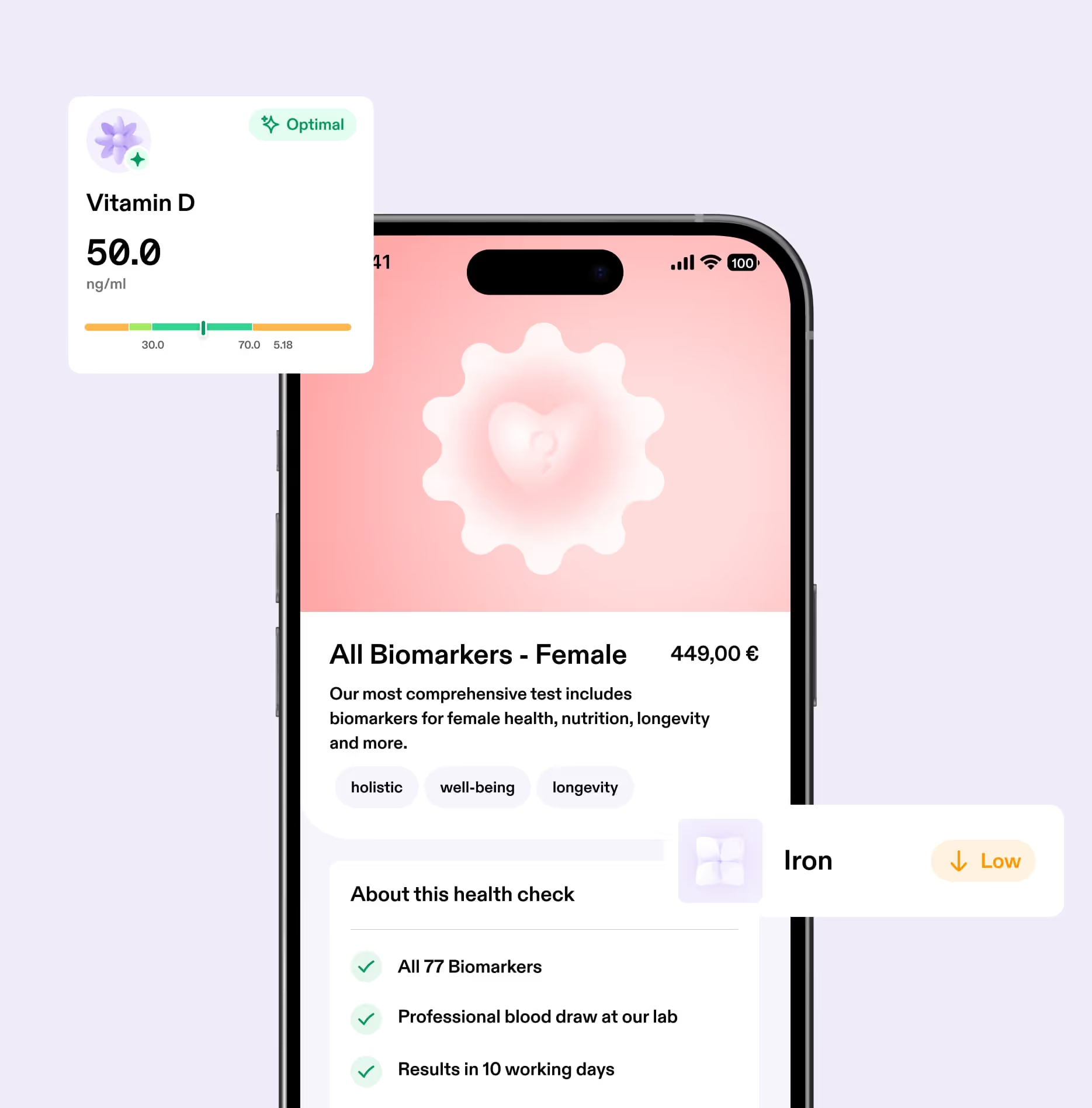Updated on
December 5, 2025
GLP-1 and your health: Why regular blood tests are so important
GLP-1 medications change your metabolism profoundly - and often faster than is visible on the outside. Blood tests help you understand what is happening inside your body, whether the therapy is working correctly, and if you are proceeding safely.

The effect of GLP-1
GLP-1 medications like Semaglutide or Tirzepatide act on more than just hunger or weight. They influence central processes in the body: blood sugar, liver fat, inflammation, lipid metabolism, and nutrient balance.
These changes are positive - but they take place internally and often remain invisible without blood tests. Many people report that while they have less appetite and lose weight, they do not know exactly what is improving health-wise. Here, blood values provide clear answers.
What happens in the body - and how to measure it
Numerous studies show these repeated patterns:
1. Blood sugar and metabolism improve significantly
GLP-1 has been proven to lower:
- HbA1c
- Fasting insulin
- Glucose
- HOMA-IR
These values show how well your sugar and insulin regulation is functioning. Doctors use them to assess the success of the therapy.
2. The liver is noticeably relieved
Especially in people with fatty liver, liver values improve, such as:
- ALT
- AST
- GGT
- Bilirubin
A large meta-analysis shows: GLP-1 can significantly reduce liver fat - an effect that can be tracked well in a blood count
3. Inflammation in the body decreases
Inflammatory markers like hsCRP or α-1-acid glycoprotein frequently drop visibly under GLP-1. This means: less silent inflammation and a "calmer" immune system.
4. Blood lipids also change
GLP-1 has a positive effect on the lipid profile:
- LDL and triglycerides decrease
- HDL stabilizes
- Non-HDL improves
This can reduce long-term cardiovascular risk.
Which nutrients need to be monitored
Rapid weight loss, reduced appetite, or mild gastrointestinal issues can influence nutrient stores. Therefore, experts recommend regularly checking:
- Vitamin D
- Vitamin B12
- Ferritin (iron storage)
- Folate
This allows deficiencies to be detected early - before they trigger symptoms.
Info Box: Why blood tests under GLP-1 are truly indispensable
Blood tests show you:
- Is the therapy working as expected?
- Is your liver function improving?
- Is your inflammation decreasing?
- Does your metabolic reaction match your weight progression?
- Are nutrient deficiencies developing?
- Is your weight loss happening at a healthy pace?
Blood tests show your doctor:
- Whether dosage or approach should be adjusted *
- Whether risks are recognizable early on
- Whether the therapy remains safe in the long term
Many real-world studies confirm: Without regular values, changes are often noticed too late. Health authorities like the FDA also recommend laboratory checks within the framework of GLP-1 therapy
How often should you test?
Most experts recommend the following structure:
- Before starting GLP-1 therapy: Complete baseline
- After 8 - 12 weeks: First progress test
- Then every 3 months: To monitor efficacy and safety
- In case of complaints: Immediate check
This frequency shows early on how your body is reacting - and whether adjustments are necessary.
Conclusion: GLP-1 changes your body.
Blood tests show you how.
Weight loss is only part of the effect. Much more happens on the inside - and exactly these changes determine your long-term health. Regular blood tests make this knowledge visible: safe, understandable, and measurable.
They help you to consciously accompany the therapy - and give doctors the information they need to support you in the best possible way.

All Biomarkers - Female Package
Our most comprehensive test, including biomarkers for female health, diet, longevity, and more.

All Biomarkers - Male Package
Our most comprehensive test, including biomarkers for male health, diet, longevity, and more.
Subscribe to our newsletter!
Articles, tips, and offers. Straight to your inbox.










.avif)

